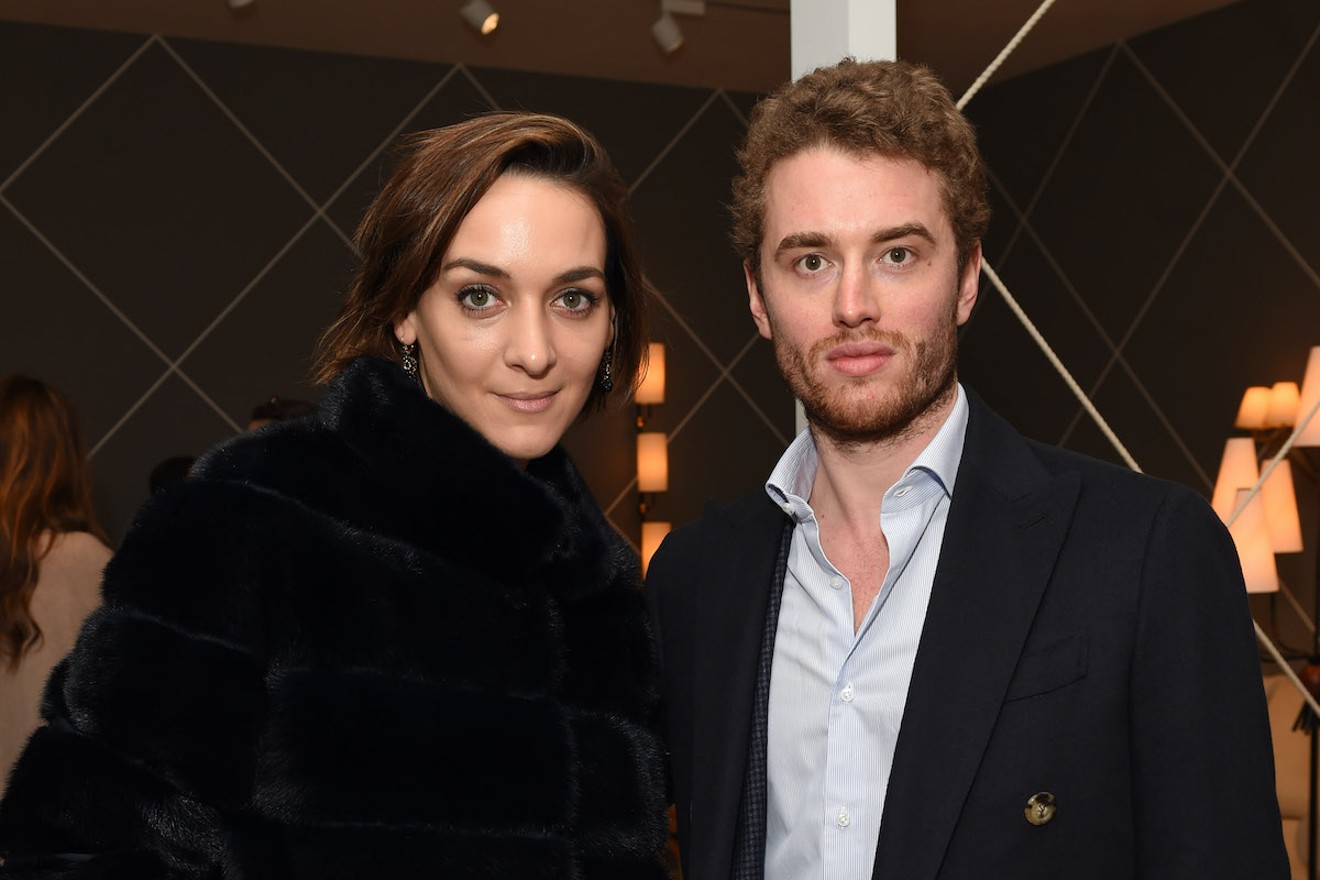This week, New Times published a tale about a now-vanished art gallerist being sued in Miami, New York, and London for allegedly defrauding clients out of millions of dollars. Inigo Philbrick is accused of selling a portrait of Pablo Picasso to three buyers, all of whom want what they paid for. He has ghosted everyone from a London judge to his own attorneys and landlord.
A London judge has now frozen Philbrick's global assets for failing to appear at two court hearings. His Miami gallery is all bare walls and desk chairs, and his London gallery is also apparently abandoned.
Miami is no stranger to corruption, but the art world's mysterious wheelings and dealings are next level. Just in time for the end of Art Basel, an alternate universe where duct-taped bananas are called art and men's clothing line tries to sell a $5 million T-shirt, here are five only-in-Miami stories of art-world chicanery.
1. A 2010 lawsuit said Romero Britto might have been screwed by forgers, but he screwed dealers too. Romero Britto's colorful, cubist pop-art style is unmistakable. The artist, whose work became popular enough to be forged, filed a lawsuit against several galleries in 2010 for selling fake pieces.
An art dealer who bought and resold one of those fakes then filed a lawsuit of his own, accusing Britto of negligence and claiming the artist should have warned buyers about the forgeries. (Britto later settled out of court with the art dealers.)
2. A well-known gallery owner and collector of Cuban art was accused of selling counterfeits in 2005. Ramon Cernuda, gallery director of Cernuda Arte in Coral Gables, was used to his work causing controversy. He amassed a private collection of paintings by Cuban artists in the 1980s and drew the ire of anti-Castro activists. Bombs exploded outside his museum. He received so many death threats he stopped reporting them to the FBI. He embarrassed gallery owners by publicly saying the paintings they sold were fakes. And, ultimately, another collector accused him of selling fakes. The collector also claimed Cernuda was too inexperienced to discern real art from forged art.
Cernuda dismissed the claims as "ridiculous" and suggested they constituted "business defamation."
3. One art thief was arrested twice by Miami-Dade police for allegedly swindling victims. In 2011, an accused art thief arranged to buy ten paintings from an art dealer for about $1 million. He put the paintings in his car and agreed to pay the dealer at his office. Instead, the thief pulled a gun on the dealer and said he was taking off without paying for the art. He was arrested on four counts of grand theft.
4. The FBI Art Crime Team busted thieves who stormed a French museum and tried to sell stolen art in Miami. Bernard Ternus, a Frenchman living in Cooper City, was one of five men arrested in the 2008 bust. They stormed the Musée des Beaux-Arts in Nice, France, and left with four paintings by Monet, Sisley, and Brughel worth more than $4 million. Ternus flew to Miami after the heist and tried to sell the pieces, but no cigar.
5. Jorge Pérez, who has naming rights to Pérez Art Museum Miami, was accused of donating a forged painting to the Frost Art Museum. Jorge Pérez, whose donation of cash and art scored him naming rights to Pérez Art Museum Miami, donated two dozen works by Cuban artists to the Frost Art Museum at FIU. The authenticity of a painting credited to the late artist Carlos Alfonzo came into question in 2013.
Cesar Trasobares, an artist and friend of Alfonzo's, said something didn't add up about the painting, prompting the museum to remove it from display. Pérez stood by the authenticity of the painting and said it hung in his home for 16 years without anyone ever pointing out inconsistencies.
[
{
"name": "Air - MediumRectangle - Inline Content - Mobile Display Size",
"component": "19274298",
"insertPoint": "2",
"requiredCountToDisplay": "2"
},{
"name": "Editor Picks",
"component": "17482312",
"insertPoint": "4",
"requiredCountToDisplay": "1"
},{
"name": "Inline Links",
"component": "18711090",
"insertPoint": "8th",
"startingPoint": 8,
"requiredCountToDisplay": "7",
"maxInsertions": 25
},{
"name": "Air - MediumRectangle - Combo - Inline Content",
"component": "17482310",
"insertPoint": "8th",
"startingPoint": 8,
"requiredCountToDisplay": "7",
"maxInsertions": 25
},{
"name": "Inline Links",
"component": "18711090",
"insertPoint": "8th",
"startingPoint": 12,
"requiredCountToDisplay": "11",
"maxInsertions": 25
},{
"name": "Air - Leaderboard Tower - Combo - Inline Content",
"component": "17482313",
"insertPoint": "8th",
"startingPoint": 12,
"requiredCountToDisplay": "11",
"maxInsertions": 25
}
]












